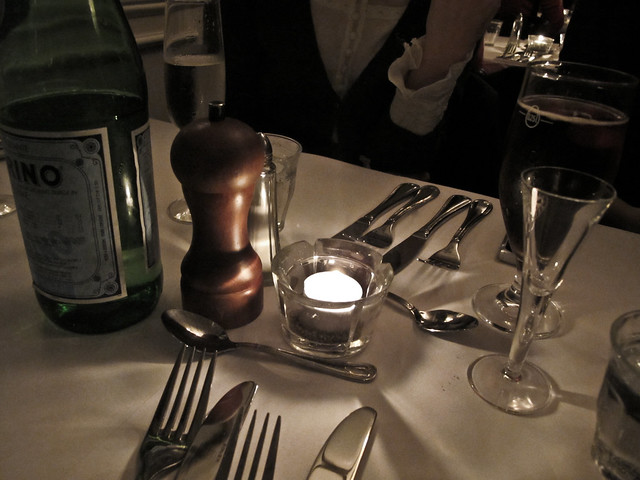I just spent the evening ruining a perfectly good hamburger while trying to re-learn how to use my knife and fork. In an effort to immerse myself more completely during my time in Europe and Scandinavia I’m starting to try and eat like a European. Unfortunately, that means awkwardly using my knife and fork, throwing a chunk of my traditional American table manners out the window, and desecrating – yes I said desecrating – hamburgers.
If you’re planning a trip to Europe and are from the US one key (but subtle) difference to prepare for is how you cut and eat your food. For those of you raised to eat in the European/Continental style this won’t be an issue for you. If, like me, you were raised using the American style you’re in for a bit of an adventure and this post is for you.
First, let’s get back to basics. Just what are the American and Euro/Continental styles that I’m talking about? They’re two different approaches for using your knife and fork during a meal. While you’ll encounter other cultural differences in the way a table is set and what is considered polite the use of your knife and fork is one of the most blatant cultural faux paus Americans make while dining abroad. Let’s take a look at the styles via wikipedia:
The American style
In the American style, also called the zig-zag method, the knife is initially held in the right hand and the fork in the left. Holding food to the plate with the fork tines-down, a single bite-sized piece is cut with the knife. The knife is then set down on the plate, the fork transferred from the left hand to the right hand, and the food is brought to the mouth for consumption. The fork is then transferred back to the left hand and the knife is picked up with the right. In contrast to the European hidden handle grip, in the American style the fork is held much like a spoon or pen once it is transferred to the right hand to convey food to the mouth.
The European style
The European style, also called the continental style, is to hold the fork in the left hand and the knife in the right. Once a bite-sized piece of food has been cut, it is conducted straight to the mouth by the left hand. The tines remain pointing down. The knife and fork are both held with the handle running along the palm and extending out to be held by thumb and forefinger. This style is sometimes called “hidden handle” because the palm conceals the handle.
While seemingly a fairly subtle difference, it’s amazing how challenging it is to use one’s fork in a different hand and fashion than you’re accustomed to. Perhaps it’s just indicative of my complete lack of ambidexterity, but I’m better at writing my name with my left hand than I am at using it to pilot my fork. I fear that at times I look less like a well mannered diner, and more like a bumbling fool trying far too hard not to dump a fork full of food into my lap.
Is it something the average traveller should worry about? Not in most situations, however, if you’re studying or working abroad sound table manners can be the difference between getting a job or a follow up invitation to future events. It’s something to be aware of, and if you’re feeling adventurous to try and adopt. It’s a small thing, but it is something that people notice. Good luck and bon appétit!
Have a story to share about table manners or a tip to add? Please share it in a comment below.
